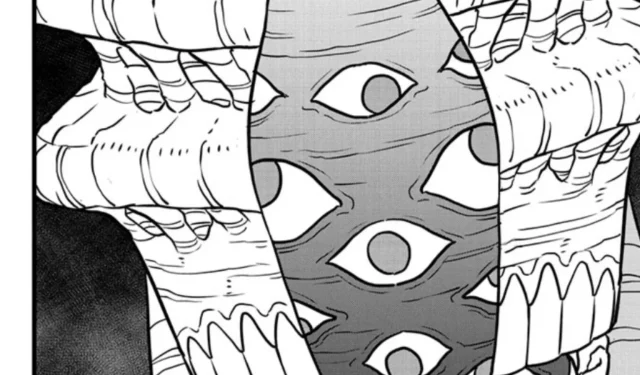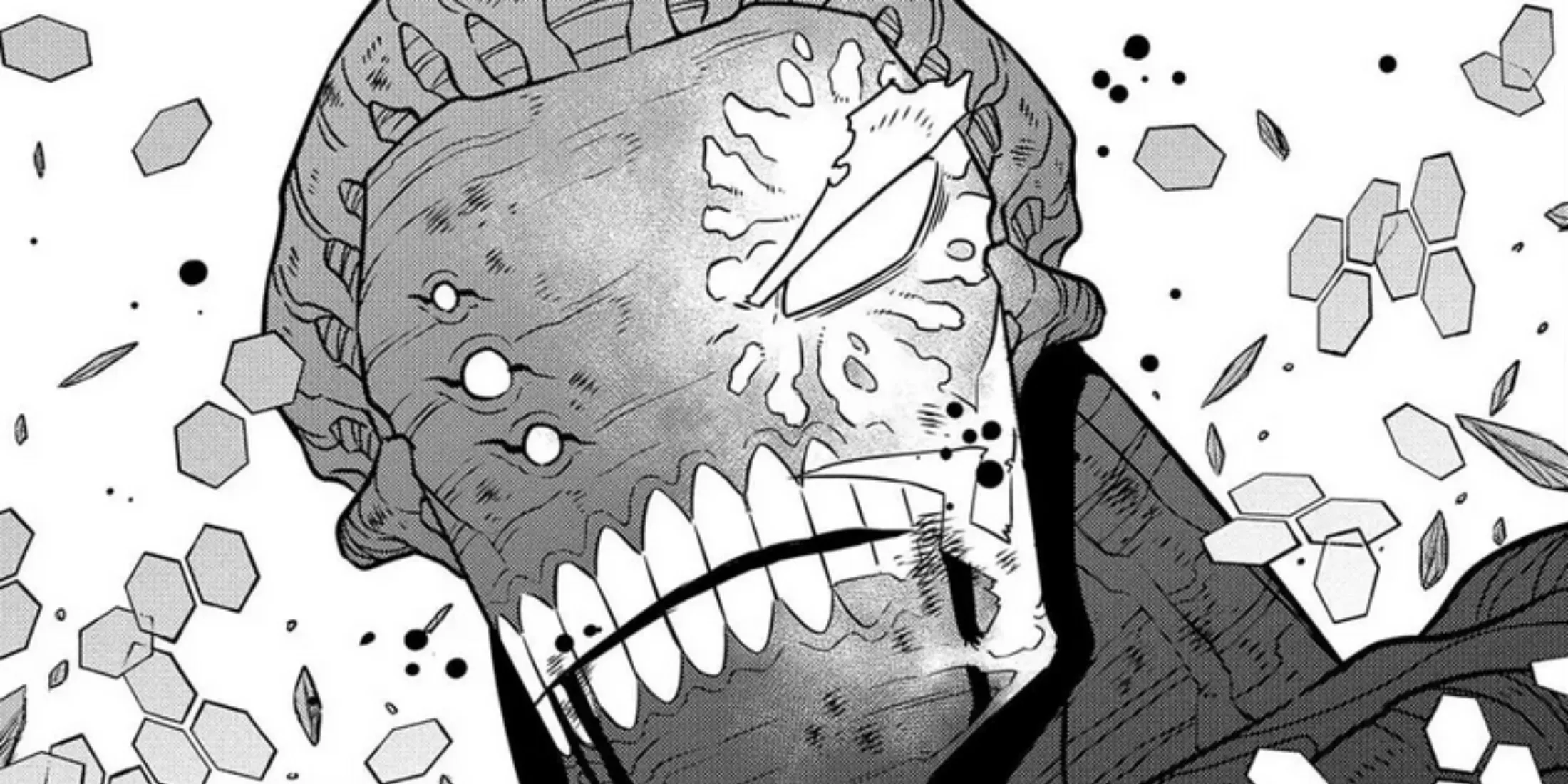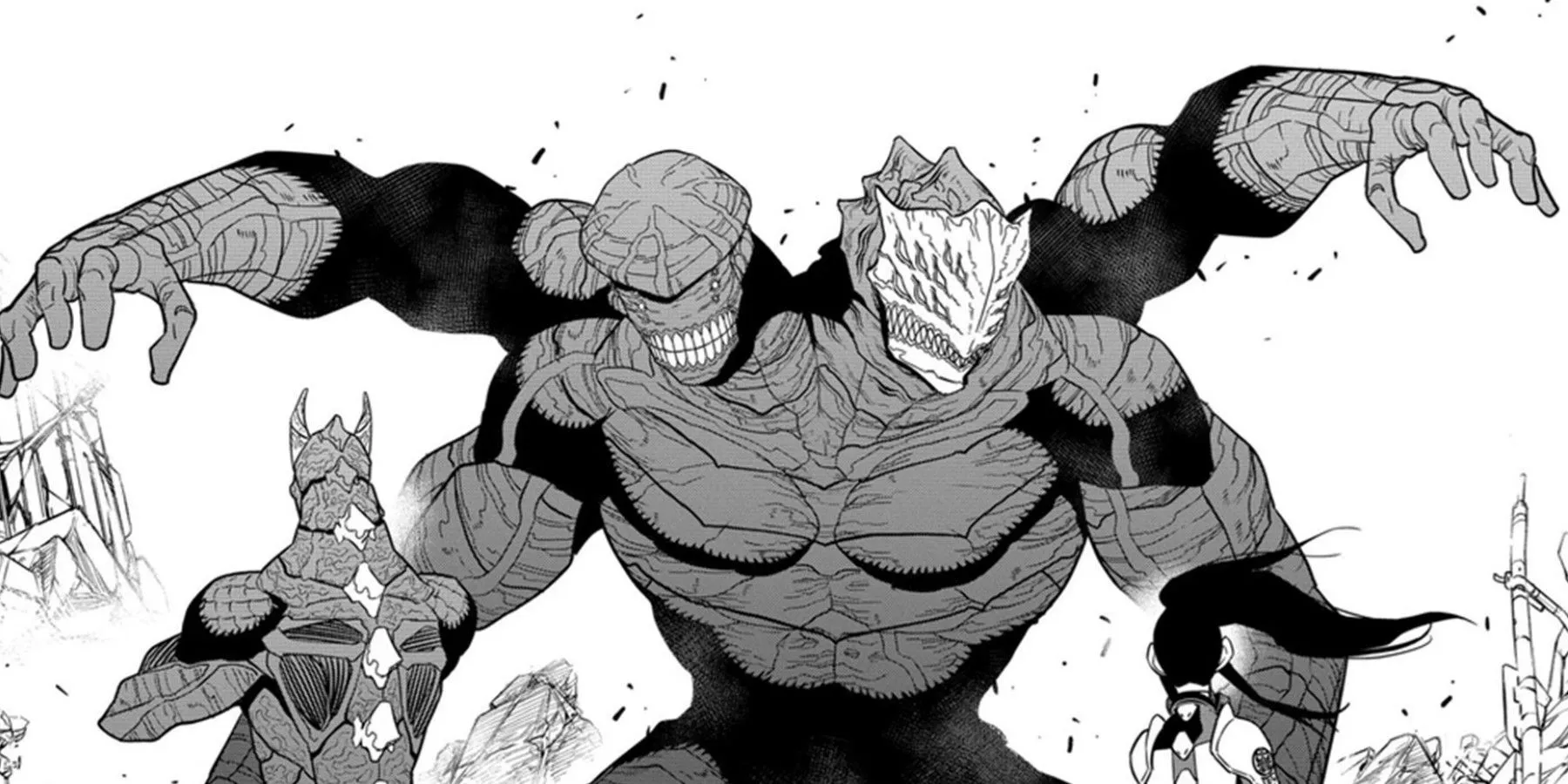
Main Insights
- Kaiju No. 9 serves as the primary villain, characterized by its exceptional intelligence, ability to shape-shift, and role as the creator of formidable Kaiju.
- This antagonist is coldhearted and strategic, aiming to dominate a world governed by Kaiju, evolving from vanquished adversaries, and spawning Kaiju numbered 10 to 15.
In Naoya Matsumoto’s captivating series Kaiju No. 8, Kaiju No. 9 stands out as the principal antagonist, making its debut in the fourth episode of the anime adaptation. Its remarkable smarts, talent for disguise, and rapid ability to absorb and utilize knowledge make No. 9 the most perilous Kaiju humanity has confronted, even when considering earlier devastating dai-Kaiju.
As more layers of this creature are unveiled in the manga during a fierce clash with Kafka Hibino, the question lingers: what truly is Kaiju No. 9 and what drives its ambitions?
Introduction of the Character
Adversary of the Defense Force

Early in the narrative, No. 9 cleverly infiltrates the post-Kaiju cleanup service where Kafka is employed, utilizing its shape-shifting prowess to masquerade as individuals it has eliminated. In its self-reflection, No. 9 acknowledges it wasn’t always a formidable entity and relied heavily on intellect and transformation to execute its ambitions without hindrance.
Initially, I perceived it as merely a fragile Kaiju whose intelligence was its sole advantage. I evaded humans and led a subdued existence until that pivotal moment when I realized my power surpassed theirs.
The most striking trait of No. 9 is its cold and calculated demeanor, allowing it to spare innocent lives when necessary to avoid detection. It possesses a sharp acumen and strives to create a Kaiju-dominant world. This motive fuels its infiltration into organizations such as the Professional Kaiju Cleaning Company, Monster Sweeper Inc., to reclaim Kaiju forces it believes humanity has unjustly usurped. Despite its detached nature, No. 9 demonstrates a fascination with humanity’s resilience. In chapter 113, during an exchange with Kafka, it articulates a profound curiosity about human behavior, pondering why we confront foes far more powerful than ourselves.
Abilities of No. 9
Versatile Shapeshifting, Absorption, and Spawn Mechanism: No. 9 as a Harbinger of Doom

No. 9 boasts an array of capabilities, including remarkable shape-shifting that enhances its combat effectiveness. Initially, No. 9 presents a sinister, slender form with a hammer-like head and tiny eyes obscured by a mushroom-like protrusion. It can spawn Kaiju and is the progenitor of numbers 10 through 15, as well as numerous swarms of Honju. Beyond its astounding ability to create such powerful Kaiju, No. 9 can absorb others it encounters, having previously absorbed No. 2—a challenge that Captain Shinomiya had faced, thus gaining access to its abilities and even eliminating Shinomiya in the process.
As it continues to undergo evolution through its absorptions, No. 9 grows significantly stronger since its first appearance. Upon taking on No. 2, it develops an additional head along with a pair of arms sprouting from its back. In its critical encounter with Kafka, damage to its core results in its visage splitting open to reveal countless eyes, sprouting eight arms, ultimately resembling the Asuras from Hindu and Buddhist lore—symbols of chaos and evil or “antigods.”The act of performing a mudra (hand gesture) soon after this transformation aligns with its ominous origins.
Unveiling Kaiju No. 9
“The Daikaiju From the Meireki Era”

Initially, No. 9 viewed itself as powerless. It once existed as a small, weak creature, but a revelation struck when it realized it wielded more strength than humans and developed an insatiable thirst for knowledge. This newfound curiosity compelled it to explore how it could influence the very society it once shunned, leading to further understanding. No. 9 believes no individual—human or Kaiju—has escaped its reach throughout history, and it feels destined for a pivotal confrontation. This realization solidifies No. 9’s reputation as an immensely powerful entity, and its appearance, reminiscent of Eastern interpretations of Hell, echoes the vast power it concealed until Kafka struck its core.
After its core is damaged, No. 9 deals a fatal blow to Kafka, melding their minds for a shared conversation. It presents Kafka with a visceral battlefield scene, showcasing a familiar hannya mask (symbolizing a vengeful spirit and reflecting the concept of prajñā, or wisdom). No. 9 concedes defeat, revealing that Kafka’s ultimate strike disrupted its balance, unleashing chaos among the countless Kaiju within it. An ancient connection links No. 8 and No. 9, tracing back to the 1600s, though the complete narrative remains shrouded in mystery.




Leave a Reply